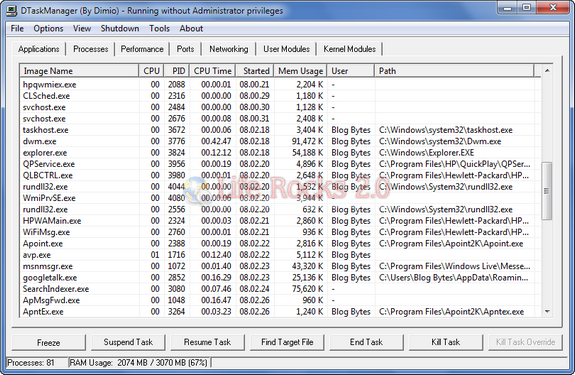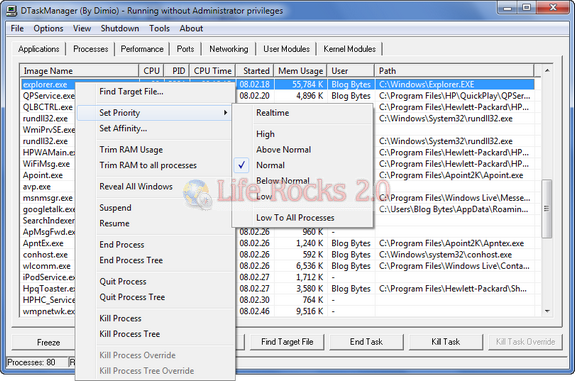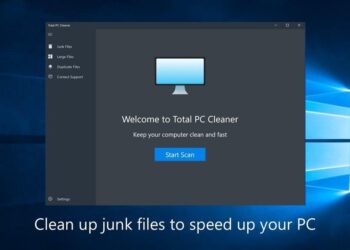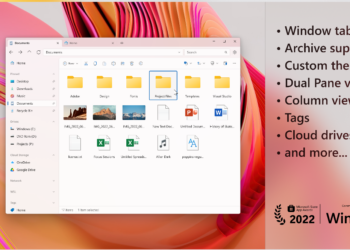Windows provides a in build task manager for all tasks and applications running under Windows, but it offers only basic features. We have covered few task manager which provides good features and options when compared to Windows task manager. DTaskManager is specifically engineered to give additional functionalities that the Windows bundled Task Manager does not provide. The interface of DTaskManager is very much similar to Windows task manager and arranged in tabs.
It features ability to temporarily hide one or more windows and also run programs as different users (similar to “Run As”). It also provides functionality to see the modules running in Kernel space and their associated paths. DTaskManager runs on Windows 2000 and newer versions including Windows 7 and does not require any installation (make sure you are running DTaskManager with admin privileges in Vista and Win 7). It also supports command line parameters.
Some of the features of DTaskManager;
- Three different ways to close a process, as the “termination request”, the standard “forced termination” with dialogue tolerance, and the “forced termination” of any type of process, bypassing all permissions (it can also terminate running system processes).
- DTaskManager allows you to suspend and reactivate a process. This is useful, for example, to temporarily suspend a task that uses system resources when you don’t want to terminate it.
- DTaskManager allows you to select more than one process at a time, and terminate all of them “simultaneously”.









